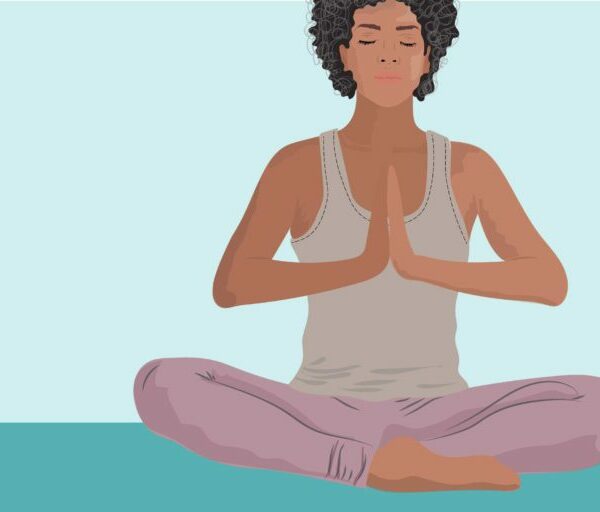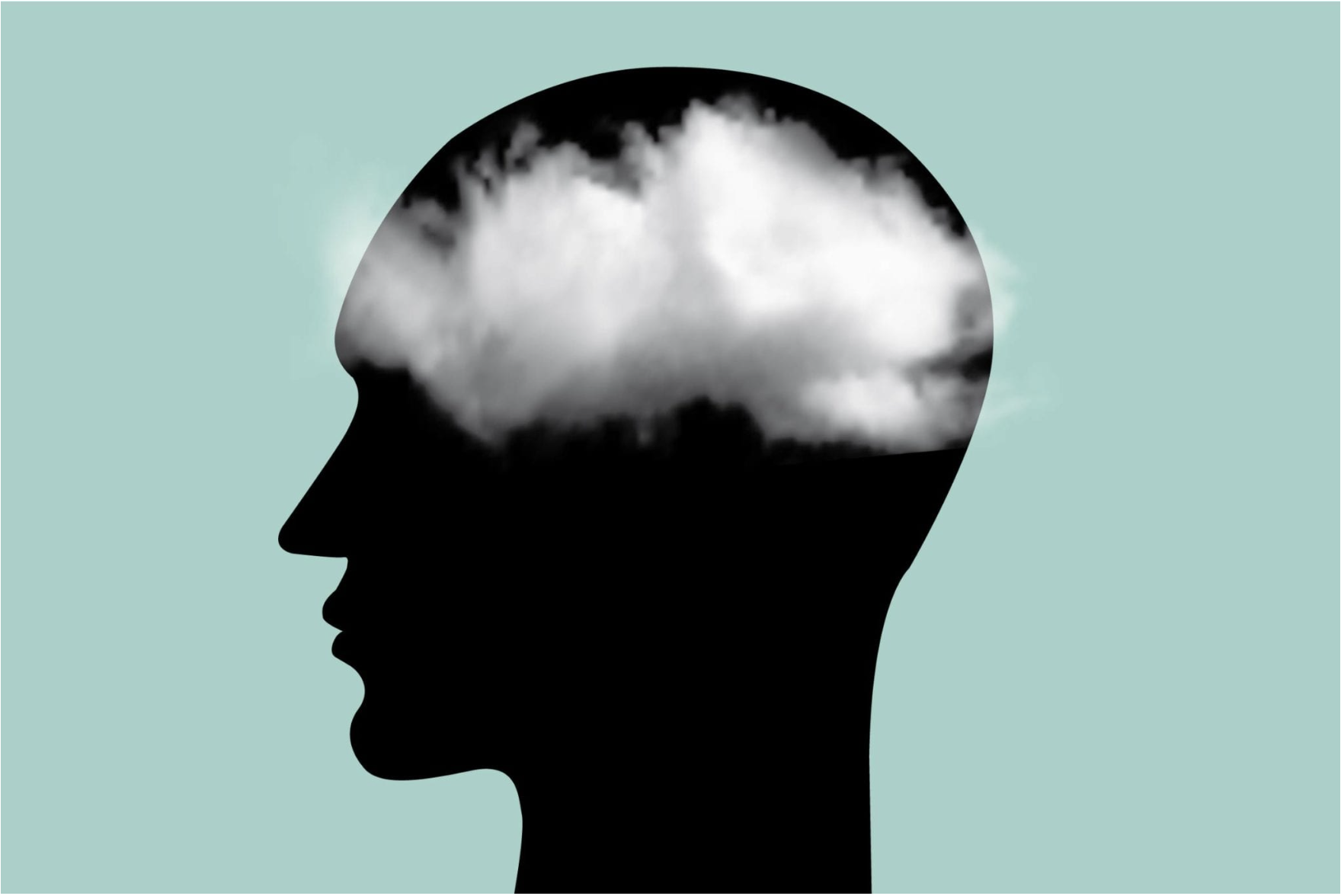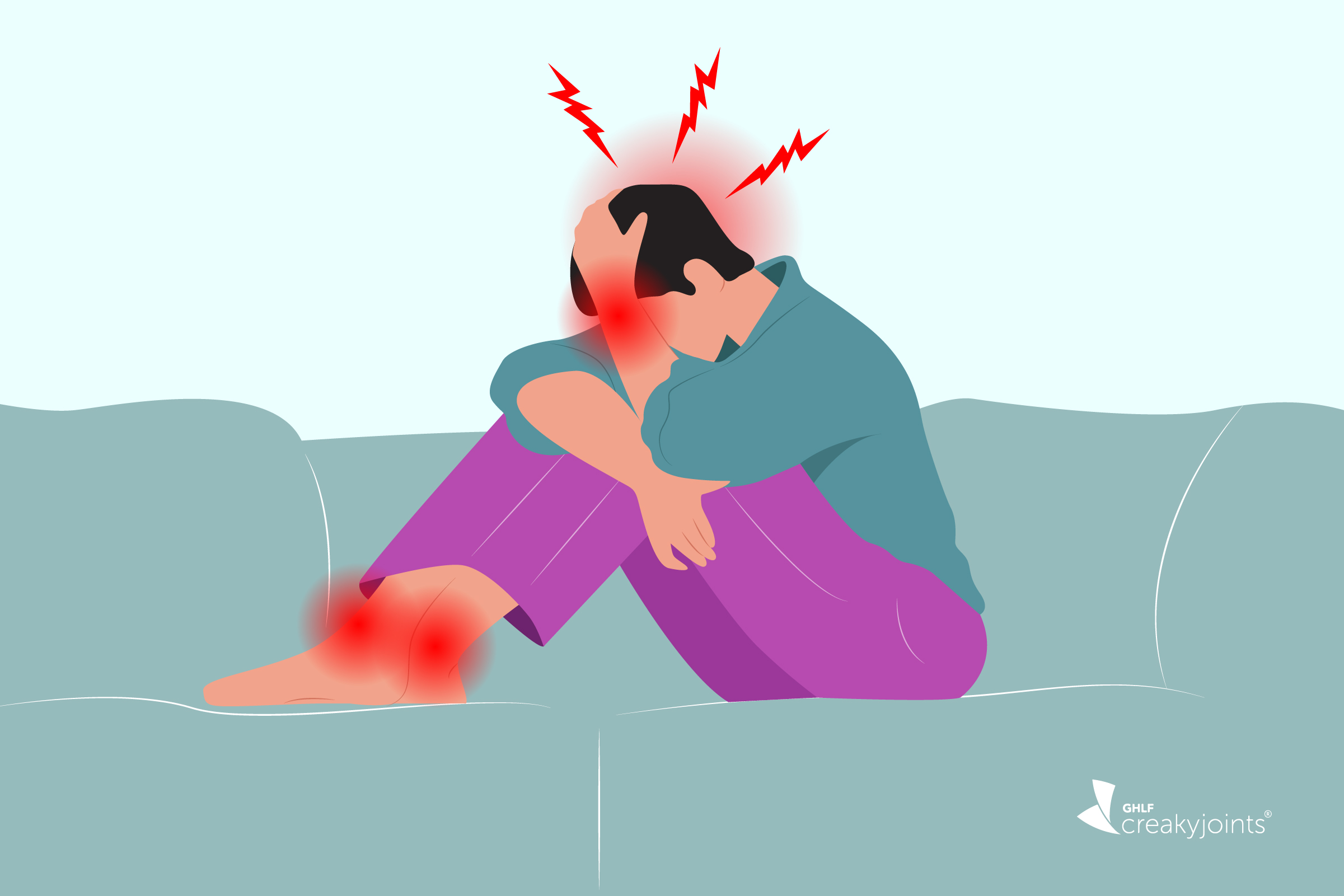Discover the symptoms of brain fog linked to migraine and learn coping strategies to manage cognitive challenges.
YOGA COULD HELP CUT YOUR MIGRAINE MEDICATION USE BY HALF, RESEARCH SHOWS
YOGA COULD HELP CUT YOUR MIGRAINE MEDICATION USE BY HALF, RESEARCH SHOWS
May 22, 2020
Karyn Repinski

If you struggle with the throbbing pain, nausea, and sensory sensitivity of migraine, adding a yoga practice to your treatment plan may help to reduce the intensity and frequency of these often-debilitating attacks, as well as to lessen the amount of medication you need to take to manage this neurological condition. That’s the finding of a new study published in the journal Neurology, which looked at the effectiveness of yoga in tandem with taking medication for migraine.
In the study, 114 men and women who experienced episodic migraine with or without aura were split into two groups — one that took medication only, and another that added a standardized yoga practice five days a week to their treatment plan. After three months, the participants who practiced yoga in addition to taking medication experienced more relief from migraine in conjunction with their medication than the group that received medical therapy alone.
In fact, more than 12 percent of the people in the yoga group became headache-free by the end of the intervention, in comparison to none in the medication-only group. They also reduced their average medication intake by nearly half.
This is an encouraging finding, in part because episodic migraine — which means you have up to 14 headache days a month— may lead to chronic migraine, which is characterized by 15 or more headache days a month.
How Yoga Helps Migraine
Yoga likely benefits migraine patients for multiple interrelated reasons, says Rohit Bhatia, MD, a professor of neurology at All India Institute of Medical Services in New Delhi and one of the study authors. For instance, yoga helps relieve muscle tension caused by trigger points in the head and neck. Tight muscles hold more stress, which is a known cause of migraine. These hyperirritable spots have been shown to be significantly more prevalent in people with migraine compared to those without migraine.
Yoga also modulates the body’s autonomic nervous system, which controls the involuntary response to stressful situations. “This reduces blood pressure, heartbeat, and stress-related hormones,” all of which can lead to clinical manifestations of migraine including nausea, vomiting, diarrhea, flushing, and skin pallor or flushing, says Dr. Bhatia.
Finally, yoga is a mood elevator. “Migraine patients are prone to depression, and the release of endogenous [natural] opioids and [mood-boosting] endorphins, and a decrease in the circulating substance P [a neuropeptide involved in depression and anxiety] are all factors that may contribute to a happy state of mind,” says Dr. Bhatia.
What the Yoga Routine Included
The yoga routine performed in the study started with prayer and breathing and meditation exercises. Then participants performed relaxation techniques and physical exercises to warm up the body, followed by quick relaxation techniques.
A series of asanas, or body postures (commonly performed yoga poses include Downward Facing Dog, Tree, Warrior, and Triangle), yoga nidra in savasana pose (a type of deep relaxation done at the end of the practice), and more breathing poses (pranayama) rounded out the yoga sessions.
The program was developed for beginners, but the researchers recommend talking with your doctor before using it to supplement your treatment to be sure there’s no reason it could be harmful. Because exercise is an excellent way to reduce stress, most doctors are likely to give the thumbs-up. In fact, if you’re one of the 20 percent of migraine patients for whom physical exertion is a trigger, the slower, mindful movements and even static muscular exercises done in yoga are considered to be a good alternative to more active exercises.
How to Start Doing Yoga
Here are some tips from the American Migraine Foundation about starting a yoga practice.
If you’re looking for online yoga classes to do from home while following stay-at-home orders, check out these resources:
- Verywell: The 8 Best Online Yoga Classes of 2020
- YouTube: Free Online Yoga Classes
- YogiApproved: 10 Great Resources for Online Yoga Classes
Kumar A. Effect of yoga as add-on therapy in migraine (CONTAIN). Neurology. May 6, 2020. doi: https://doi.org/10.1212/WNL.0000000000009473.
SUBSCRIBE TO GHLF
RELATED POST AND PAGES
_
Was this article helpful?
YesNo




